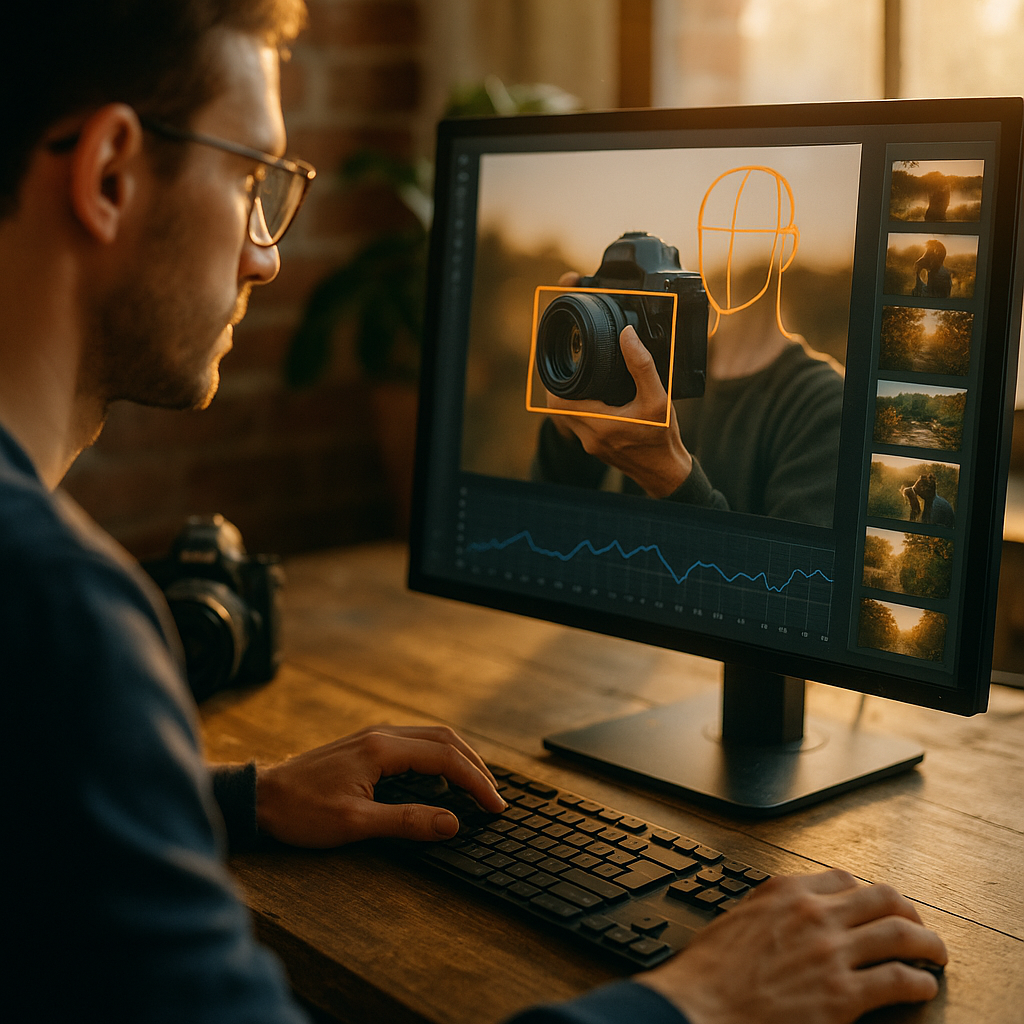Computer vision AI for visual content optimization is revolutionizing how businesses engage their audiences online. By automatically analyzing and improving images and videos, this technology improves SEO, boosts conversions, and extracts valuable insights. In 2025, leveraging computer vision is more essential than ever to stay ahead in competitive digital markets. Let’s explore exactly how organizations are gaining this edge.
How Computer Vision AI Transforms Visual Content Creation
Computer vision AI uses deep learning and advanced algorithms to interpret visual data, offering significant advantages in content creation and optimization. It automatically identifies key objects, themes, and even emotional cues in images and videos. This enables marketers and content creators to:
- Detect and select the most compelling visuals for diverse audiences.
- Ensure accessibility and compliance by analyzing contrast and text readability within images.
- Streamline editing by recommending cropping, resizing, and enhancements that align with branding guidelines.
- Automatically generate descriptive alt text and metadata, vital for SEO and inclusivity.
Harnessing these features results in consistent, on-brand visuals that truly resonate. According to a 2024 Content Marketing Institute survey, 71% of marketers experienced higher engagement rates after implementing AI-driven content optimization.
Enhancing SEO with Visual Content Analysis
Search engine algorithms increasingly reward sites with high-quality, optimized visual content. Computer vision AI for visual SEO analyzes image and video assets to ensure they meet search engine requirements. It evaluates elements such as:
- Image relevance and context within the page
- Proper use of ALT attributes with descriptive, keyword-rich text
- Optimal file size, format, and load times for performance
- Structured data tagging for enhanced SERP visibility
With computer vision, webmasters can automate the technical and creative aspects of visual optimization. Research by Moz in December 2024 highlights that websites employing AI-based image optimization saw a 30% lift in organic image search traffic compared to traditional methods.
Personalizing User Experience Through Visual Content Optimization
Personalization is a critical factor in increasing engagement and retention. Computer vision personalization tools analyze user interactions with visual content in real-time. They can:
- Recommend images users are statistically more likely to engage with based on demographics and behavior
- Swap or adjust visuals dynamically to match audience preferences or regional trends
- Monitor scroll depth and focus areas to identify the most attention-grabbing visuals
In e-commerce, this leads to more relevant product recommendations, while publishers use it to improve article click-through rates. Adobe’s 2025 Visual Personalization Index revealed brands using computer vision personalization strategies achieved a 22% higher customer retention rate.
Automating Compliance and Accessibility in Visual Media
Legal and ethical standards in 2025 demand accessible and compliant web content. Computer vision AI streamlines this process:
- Accessibility: It scans for contrast ratios, font sizes, and overlays to ensure visibility for users with impairments.
- Content Moderation: Computer vision identifies potentially inappropriate images, helping businesses remain compliant with regulations and brand safety requirements.
- Automated Alt Text: It generates accurate descriptions crucial for screen readers and WCAG compliance.
By automating these tasks, computer vision reduces risk and enables brands to focus on creativity while maintaining high legal and ethical standards—a must in the rapidly evolving digital landscape.
Extracting Actionable Insights from Visual Data
The latest computer vision analytics tools convert raw visual data into actionable business intelligence. These insights help inform marketing, sales, and product development strategies:
- Analyzing consumer sentiment by recognizing facial expressions in UGC (user-generated content)
- Tracking trending visuals and aesthetics by scanning millions of images across platforms
- Measuring campaign effectiveness by correlating visual elements with engagement metrics
- Optimizing product imagery based on performance data in A/B tests
For example, global retailers have used computer vision to identify high-converting product angles, resulting in double-digit improvements in online sales. In an era of data-driven decision-making, visual data is an invaluable resource, and AI is the key to unlocking its full potential.
Integrating Computer Vision AI: Best Practices for Success
To ensure the successful integration of computer vision AI for visual content optimization, organizations should follow these best practices:
- Define clear goals for visual optimization aligned with business objectives.
- Choose AI platforms with proven EEAT (Experience, Expertise, Authority, Trustworthiness) and robust security standards.
- Continuously train AI models on current, relevant datasets for accuracy.
- Monitor performance using analytics and iteratively optimize strategies based on results.
- Engage multidisciplinary teams—designers, SEO specialists, and compliance officers—to maximize value.
By adhering to these principles, any organization can harness the transformative power of computer vision while ensuring content quality, user satisfaction, and regulatory compliance.
Frequently Asked Questions about Computer Vision AI for Visual Content Optimization
-
What is computer vision AI in content optimization?
It’s the use of artificial intelligence to analyze, enhance, and optimize visual media (images and videos) to maximize user engagement, SEO, accessibility, and conversion rates. -
How does computer vision improve SEO?
By automating image analysis, generating relevant alt text, optimizing file sizes, and ensuring visuals are contextually appropriate, computer vision helps increase search visibility and drive organic traffic. -
Can computer vision AI make my content more accessible?
Yes. It checks contrast ratios, identifies text readability issues, and auto-generates alt descriptions, enabling compliance with accessibility standards like WCAG. -
Does computer vision AI require technical expertise?
Not always. Many leading platforms feature user-friendly interfaces and plug-ins that marketers and content teams can use with minimal technical knowledge. -
Is my data secure with AI-powered visual optimization tools?
Choose platforms with strong data security protocols, including encryption and compliance certifications, to ensure your visual assets and user data remain safe.
In summary, computer vision AI for visual content optimization empowers brands to create, analyze, and personalize visual media at scale. By leveraging these capabilities in 2025, businesses can dramatically increase engagement, enhance SEO, and drive ROI—ensuring they thrive in the competitive digital ecosystem.
